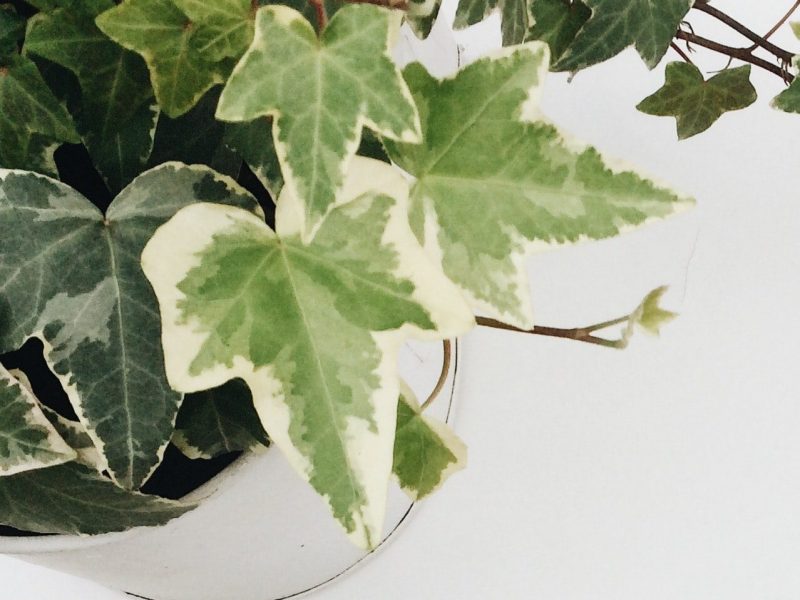
Basic English Ivy Care
Known for its evergreen trailing vines, English Ivy is a relatively easy houseplant to take care of. Below you will find our complete English Ivy care guide with all the information you need to help your ivy thrive.
| Light |
Bright Indirect LightI love the sunshine but too much direct light will damage my leaves. |
| Water |
Water ModeratelyI don’t like my soil to be too dry or too soggy. Little and often is what I’m after. |
| Humidity |
Medium HumidityPlease make sure the air isn’t too dry, otherwise I won’t be a happy plant. |
| Soil |
Potting SoilI need soil specifically for indoor plants as it retains the right amount of water. |
Avoid direct sunlight in summer
English Ivy like sunshine but also do well in medium to low light levels. In summer avoid putting your Ivy too close to the window as the intense direct light will harm the leaves. In winter it can deal with a little more direct light.
English Ivy like their soil to be moist
One of the most important things to be aware of when taking care of an English Ivy is watering. We recommend watering your English Ivy a little more regularly than some of your other houseplants as they don’t like their soil to dry out. However, hold back on the volume of water as their roots will rot if the soil is waterlogged.
Occasionally mist your English Ivy if its really hot
Humidity levels are not a major thing to look out for when growing an English Ivy indoors. If you live in a hot climate, it might be good to mist your plant every other week or so during summer to add a little humidity.
Don't worry about fertilising an English Ivy
English Ivy don’t require feeding and will thrive on their own. However, if you do want to feed it we recommend only doing it in spring with a soluble fertiliser at half the recommended strength.
Repot with new soil regularly
English Ivy really benefit from having their soil replaced every year or so. You don’t necessarily need to repot into a bigger pot each time (only when you feel it is very root bound) but they can be spruced up by just refreshing their soil.
Pruning keeps an English Ivy bushy and healthy
Knowing when and how to prune an English Ivy is really important. We recommend trimming it back quite a lot every 3 years to stimulate new growth. In between, prune off the leggy vines quite far up and it will make your plant bushier and more compact.
Propagate your English Ivy using stem cuttings
You can very easily propagate your English Ivy by cutting off some of the vines and placing them in water. You want to make sure the vines are about 10cm+ so they have the best chance at growing roots. Switch out the water every few days to keep it fresh and repot into soil once roots have started to grow on the vine.
Unfortunately, English Ivy is toxic to pets
You will want to keep your pets away from any English Ivy as ingestion can cause stomach issues. Other symptoms may start to arise if your pet digests a large amount of English Ivy so it is best to keep any dogs and cats away from it.

English Ivy FAQs
Quick and simple answers to the most common questions we see about the English Ivy.
Can English Ivy grow indoors?
Yes, although English Ivy is often known as a outdoor plant, they can make great potted houseplants too. They are pretty adaptable and low maintenance so perfect for every home.
Can the English Ivy tolerate full sun?
You want to keep your English Ivy away from direct sun during summer as it can dry out the leaves and stems pretty quickly. But aside from that, English Ivy plants can adapt to most other light levels, making them one of the few low light tolerant plants.
How often should I water my English Ivy?
English Ivy plants like moist soil so a little but often approach to watering is best. Monitor the moisture levels in the soil to find a good watering routine and make sure you increase it slightly during the warmer months of spring and summer.
Is the English Ivy low maintenance?
English Ivy plants are pretty easy to care for as they are one of the most adaptable houseplants. The only thing you really need to worry about is keeping the potting mix moist as they will crisp up pretty quickly if their soil is bone dry.
Is English Ivy toxic?
Unfortunately, the English Ivy plant is toxic to pets and humans if ingested.

Common Problems with your English Ivy
Here are some common issues that you might run into. It's important to diagnose any issues early to give your plant the best chance of bouncing back.
Why does my English Ivy have brown leaves?
Dry brown leaves on an English Ivy can actually be an indication of overwatering, unlike what you might expect. This is because the roots have rotted and are unable to transport nutrients to the plant.
Why is my English Ivy losing leaves?
If you notice your English Ivy is dropping leaves it is usually due to temperature shock. It may be because of cold drafts coming through doors and windows.
Why is my English Ivy wilting?
A wilting English Ivy is also often due to overwatering. Check the moisture levels in the soil and replace if waterlogged.
Why are the leaves on my English Ivy turning yellow?
Yellow leaves on your English Ivy is often caused by overwatering. Check the moisture levels in the soil and replace if waterlogged and adjust your watering schedule to prevent this occurring again.














